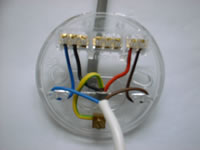OSHA PHILOSOPHIES & OBJECTIVES
Philosophy: responsibilities to
ensure safety and health at the workplace lies with those who create the risk
and those who work with the risk. (at practicable)
Scope: person at work in all
economic activities including public services & statutory authorities (exp:
on board ship/armed forced)
(manufacturing, construction, mining, transportation, hotel,
restaurant, public services, finance, insurance, agriculture, utilities.)
OBJECTIVE OF OSHA
- to secure the safety, health and welfare
of person at work
- to protect person (others then person at
work) at a place of work against hazard
- to promote occupational environment adaptable
to the persons physiological and psychological needs
- to provide the means towards a legislative
system based on regulations and industry codes of practice in combination
with the provisions of the acts
EMPLOYERS and EMPLOYEE’S RESPONSIBILITIES
Employee’s responsibilities
- provide and maintain safe plants and
system of work
- make arrangement for safe use, operation,
handling storage and transportation of plant and substances.
- Provide instruction, information, training
and supervision
- Provide and maintain safe place of work
and means of access to and egress from any lace of work
- Provide and maintain safe and healthy
working environment and adequate welfare facilities
- Formulate safety and health policy(
written statement, OSH organization, OSH arrangement)
- report to the nearest OSH officers any
accidents, dangerous
- occurance and poisoning.
- Reasonable care for safety and health of
himself and others.
- Co-operate with employer and others on
safety and health.
- Wear and use equipment provided by
employer at all time.
- Obey the rules apply by the employer under
1994 act or any related rules/law.
FACTORY AND MACHINE ACT 1967
- Factories and Machineries Act (FMA ) came
into force in 1967
- to provide for the control of factories
with respect to matters relating to safety, health and welfare of persons
at work
- to provide control on registration and
inspection of machinery.
- The Act applies only to premises defined
within it, notably factories and construction sites.
- However, a point to note here would be
that the Occupational safety and Health Act (OSHA), 1994, supersedes the
Factories and Machinery Act 1967 in the event of any conflict and
inconsistency between the two laws.
OSHA ORGANISATION
Department of Occupational Safety and Health
(DOSH)
The Department of Occupational Safety and Health (DOSH) is a department
under the Ministry of Human Resources. This department is responsible for
ensuring the safety, health and welfare of people at work as well as protecting
other people from the safety and health hazards arising from the activities
sectors which including Manufacturing, Mining and Quarrying, Construction,
Hotels and Restaurant, Agriculture, Forestry and Fishing, Transport, Storage
and Communication, Public Services and Statutory Authorities, Utilities - Gas,
Electricity, Water and Sanitary Services, Finance, Insurance, Real Estate and
Business Services, Wholesale and Retail Trades
As a government agency, the department is responsible for the
administration and enforcement of legislations related to occupational safety
and health of the country, with a vision of becoming an organization which
leads the nation in creating a safe and healthy work culture that contributes
towards enhancing the quality of working life.
National Institute of Occupational Safety and
Health (NIOSH)
December 1, 1992 - National Institute of Occupational Safety and Health
(NIOSH), under the Ministry of Human Resources to spearhead the safety and
health culture at the workplace in Malaysia. Start as company registered on
1965, now as a government organization charged with the provision of training,
consultation and information in the area of occupational safety and health.
Objective:
§ As
a main planner and drafter in OSH and prepare the curriculum and training for
workers, company and others
§
As an assistant for industries, group, and
others to handle matters on OSH.
§
To help parties involved in OSH with information
on current update on the matters in or
§
R & D (short/long term) regarding the OSH
Activities handle by NIOSH are planning all program regarding the
implementation of safety and health at the workplace including scope of work,
objective of the organization, training, and guiding the employee. Main training by NIOSH since 1993 are: Safety
on site, Safety on material, Management of OSH, Continues training &
guiding, Guidance on mining activity and Self-protection programmed.
Social Security Organization (SOCSO)
1971 as a government department to enforced Workers social safety act
1969 and became an organization by 1985.
SOCSO handle the social safety scheme which offers a protection to
workers against unpredicted event as disaster (accident on the journey, defect
and dead). Medical Treatment, physiology
and vocational and prevention against accident are provided to ensure the safety
and help the injured worker back to work as soon as possible
Their Mission are:
- Social safety insurance
- Provide fast, quality, efficient and
cheaper services using newest technology and human resources.
- Research regularly on benefit structure
based on financial capability and method of giving the benefit.
- Without increasing the contribution, but
taking a good efforts to preserve and enhance the financial by investments
and good management.
- Encourage the OSHA for employer and
employees.





